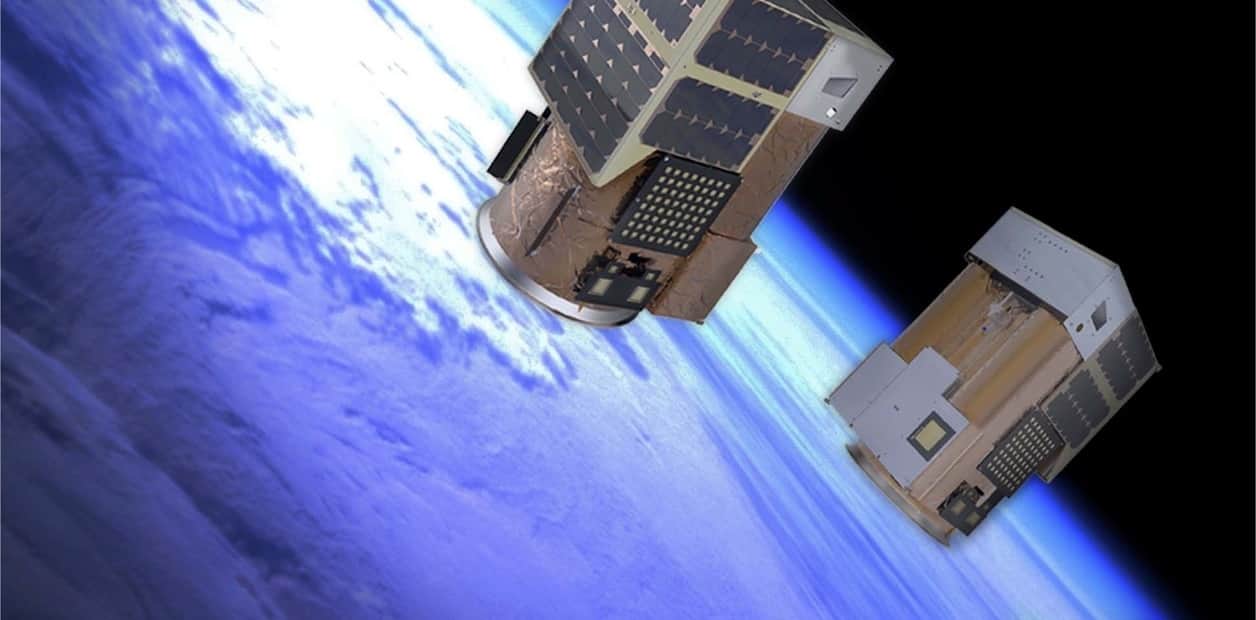Mexican nanosatellite enters space powered by Elon Musk's Space X
The launch of the nanosatellite, which was made from NASA's facilities at Cape Canaveral, is for the capture, analysis, and processing of satellite images.

The Mexican Nanosatellite "D2/AtlaCom-1" was successfully launched by Space X from NASA's facilities at Cape Canaveral, in an international satellite mission that will advance the training of Mexican students in the capture, analysis, and processing of satellite images.
In a press release, those who supervised the launch were the general director of the Mexican Space Agency (AEM), a decentralized agency of the Ministry of Communications and Transport (SCT), Dr. Salvador Landeros Ayala; the mayor of Atlacomulco, State of Mexico, Roberto Tellez Monroy; and the CEO's of the companies Space JLTZ and NanoAvionics, Jose Luis Terreros Corrales, and Brent Abbott, respectively.
"In this mission, we were able to insert an important educational component, which will allow us to train our youth in the capture, analysis, and processing of satellite images, while opening the way to develop with the Autonomous University of the State of Mexico (UAEMEX) the first pilot program of its kind in the history of the country, to boost agricultural productivity with the support of D2/AtlaCom-1," said Landeros Ayala.
The Rector of the UAEMEX, Dr. Carlos Barrera Diaz, highlighted the innovation that will mean using satellite resources to strengthen agriculture, which will allow better land use planning, cost reduction, development of increasingly sustainable supply chains, conservation of natural resources, and resilience to disasters, among other benefits aligned with the Sustainable Development Goals of the United Nations.
"With the Nanosatellite D2/AtlaCom-1, today the name of Atlacomulco reaches space, putting it very high with the support of the SCT through the AEM, and we move forward making history in this Fourth Transformation, promoting the goal of continuing to build national capacities in space for social priority tasks, especially for the benefit of those who need it most," said Mayor Tellez Monroy.
In the same sense, the benefits for the student community, such as that of the Polytechnic University of Atlacomulco (UPA), who, as its Rector René Santín Villavicencio pointed out, by training in satellite data analysis and processing, will be able to obtain skills that will provide them with high added value as competent professionals in this new digital era.
Likewise, the benefits will be extended to our country, which will be able to count more and more on young human capital, specialized in the use of Nanosatellites for noble social priority tasks, such as the protection of the population against natural disasters, forest fires, remote education and health, and other strategic areas.
"This launch by Elon Musk's Space X, means a whole new phase of the Mexican space era, as it opens an era of possibilities of specialization for the youth of our country and the industry itself, in this case with the international European-American alliance with NanoAvionics, and Dragonfly Aerospace (South African partner of the project), explained at the time the president of Space JLTZ, José Luis Terreros Corrales.
Brent Abbott said: "The D2/AtlaCom-1 Nanosatellite, with its state-of-the-art technology, is a success story that accelerates space collaboration between three continents, we appreciate being strategic allies to make history in Mexico, and we are very proud to be part of this effort for education, and to contribute to global social benefits," he concluded.

Space technology within everyone's reach
Satellites are autonomous electromechanical devices that are designed, built, and tested to perform missions of interest to societies. They are launched into space and placed at an altitude above the earth's surface in so-called satellite orbits. They pass over practically all the regions of our planet, which allows us to study the Earth, physical phenomena, space dynamics, remote sensing, etc. Many of us are familiar with satellite technologies such as communications or satellite television.
Satellites originated when the Soviet Union, in 1957, launched the first artificial satellite, Sputnik, which proved that it was feasible to put an autonomous body above the Earth to perform functions of many kinds. From there, a dynamic of scientific-technological development was generated to design, build, test, and launch these artificial bodies, which gave rise to a whole industry that is now fully consolidated.
Sputnik used to be a 60-centimeter sphere, but today satellites of many types are being built. Since the early 1960s, relatively small satellites have been built and have evolved. By the early 1990s, satellites were already large, several meters long, and weighing five or six tonnes. We are talking about large mechanisms with a lot of processing capacity for various purposes.
A tangible example of a satellite is the International Space Station, whose current dimensions are 109 meters long x 51 meters wide and a weight of 419,455 kilograms, and which rotates around the Earth, making it possible to carry out a large number of studies and space missions and to receive astronauts who for several days and even months carry out different scientific, technological and even industrial and commercial activities.
Another example of a relatively large satellite is the Hubble Space Telescope, which has a scientific application, the study of the Universe, and which has made it possible to discover previously unthinkable things. The number of satellites orbiting the Earth is enormous, generating a real problem because many of the devices that no longer work has become space junk, are drifting, or are occupying orbits that are no longer being used.
Mexico has participated as a satellite user since the government launched the Morelos I and Morelos II satellites in 1985. Then, between 1985 and 1992, it launched the Solidarity satellites. At the end of the 1990s, the satellites were privatized and the company Satmex emerged, which continued to buy satellites essentially to provide communication services to the entire country. More recently, Mexico bought a fleet of new satellites for purposes of national and social interest, the Bicentennial and Morelos III.
Building satellites is expensive, only rich countries can buy large satellites. Starting in 2002, researchers at the California Polytechnic proposed going small in satellite technology. They proposed to manufacture minimal things, structures a few centimeters long that weigh a few grams: nanosatellites. In 2002 and 2003 they proposed the standard for nanosatellites called CubeSats, which are cubes of 10 centimeters per side and weigh up to one kilogram. In this cube are placed all the electronics and intelligent mechanisms that allow the same functions as a large satellite, but at a minimal cost compared to the costs of the latter.
This proposal attracted the sympathy of the academic world and in many parts of the world, these small satellites began to be built, which has given way to space missions at very low cost and which can be done without the need for expensive infrastructure and components. It is also feasible to launch these nanosatellites into space because the launch, which is another expensive aspect of this issue, is shared: in a trip into space, not just one satellite is launched but several, because packages of tens and even hundreds of satellites are assembled, which considerably reduces costs.
This is the current dynamic that is booming in the academic world and that has attracted the attention of the industry, which is now interested in designing missions with nano satellites that can be stacked as nanosatellites of several units. In other words, a basic unit of a CubeSat can be multiplied to form systems of five or six units, although it is difficult to have a satellite like the large ones. This field allows, with a minimum investment, to start generating satellites that can go into space more widely.




